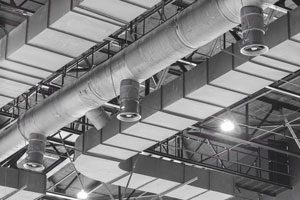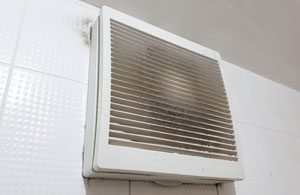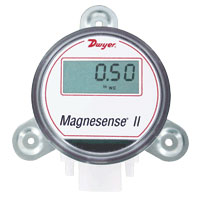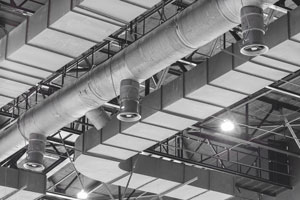 In HVAC systems, there are many different parameters that are commonly measured for system performance or building comfort. Some of the most commonly measured HVAC system parameters are temperature, air velocity, humidity and static pressure. Of those parameters, static pressure is extremely important in terms of system performance. Static pressure indicates how hard the HVAC system has to work to move air through the building or how much resistance to flow exists. The higher the static pressure, the harder the system has to work to move air through the building.
In HVAC systems, there are many different parameters that are commonly measured for system performance or building comfort. Some of the most commonly measured HVAC system parameters are temperature, air velocity, humidity and static pressure. Of those parameters, static pressure is extremely important in terms of system performance. Static pressure indicates how hard the HVAC system has to work to move air through the building or how much resistance to flow exists. The higher the static pressure, the harder the system has to work to move air through the building.
 Every component in an HVAC system will add some resistance to flow. The bulk of that resistance comes from dampers in ductwork and other functional components like heating coils, cooling coils and filters. Other components like straight ducts, tees and elbows also add small amounts to the system. HVAC system designers typically create systems which are able to handle all flow resistance and provide an ideal static pressure for system operation.
Every component in an HVAC system will add some resistance to flow. The bulk of that resistance comes from dampers in ductwork and other functional components like heating coils, cooling coils and filters. Other components like straight ducts, tees and elbows also add small amounts to the system. HVAC system designers typically create systems which are able to handle all flow resistance and provide an ideal static pressure for system operation.
 In a perfect world, these systems will be installed the way they are designed and work as intended; but sometimes systems have to be altered during installation, components are changed, ducts get damaged or accrue debris, and filters get clogged and go unchanged. All of these factors can add static pressure to your HVAC system and force it to work harder to run properly. High static pressure can cause drafty rooms with hot or cold spots, or even equipment failure. Systems with static pressure that is too high also tend make loud “whooshing” noises when they turn on and have increased energy costs.
In a perfect world, these systems will be installed the way they are designed and work as intended; but sometimes systems have to be altered during installation, components are changed, ducts get damaged or accrue debris, and filters get clogged and go unchanged. All of these factors can add static pressure to your HVAC system and force it to work harder to run properly. High static pressure can cause drafty rooms with hot or cold spots, or even equipment failure. Systems with static pressure that is too high also tend make loud “whooshing” noises when they turn on and have increased energy costs.

Luckily, there are some simple steps to prevent static pressure-related issues in your system. Monitoring static pressure across components in your system is an easy way to detect potential issues before they become big problems. Another simple maintenance step is to monitor total static pressure in the whole system. Handheld manometers can be used for one-time, manual checks, while differential pressure transmitters can be used for permanent monitoring. With Dwyer Instruments’ Series 475 and 477B handheld manometers or Series 605, MS or MS2 differential pressure transmitters, you can easily monitor the health of your HVAC system to ensure energy efficiency and prevent high maintenance costs.
To learn more or order any Dwyer product, please visit our website.

